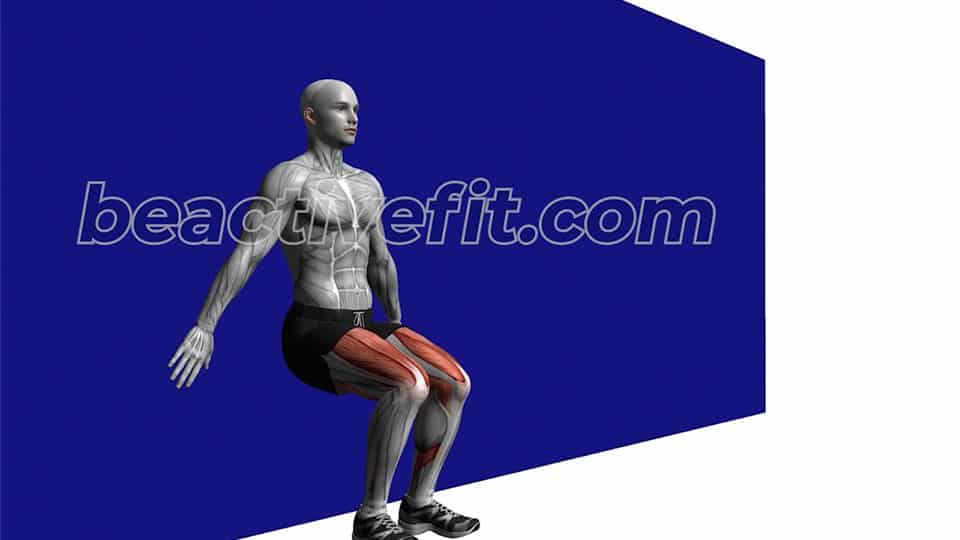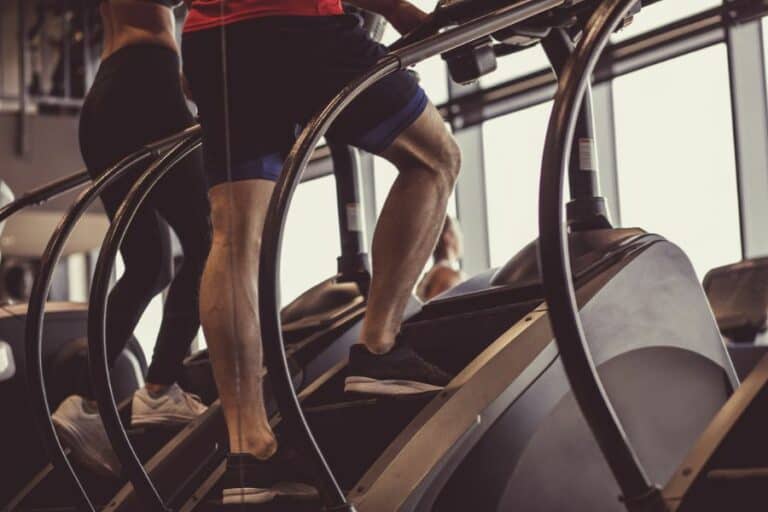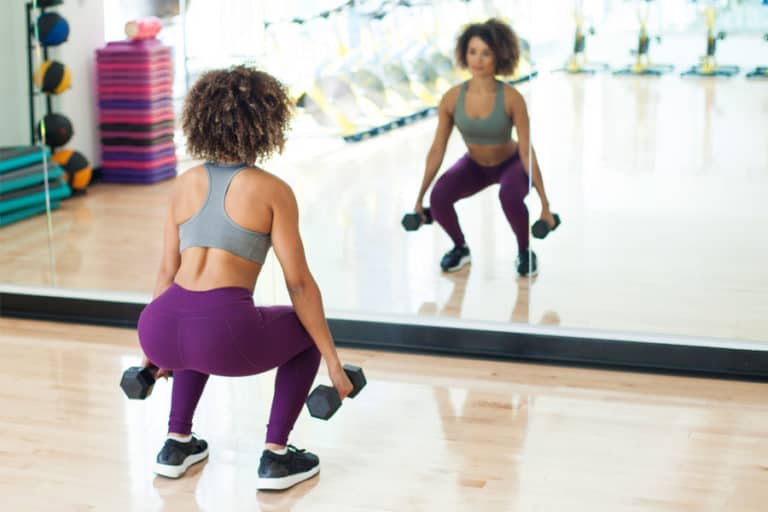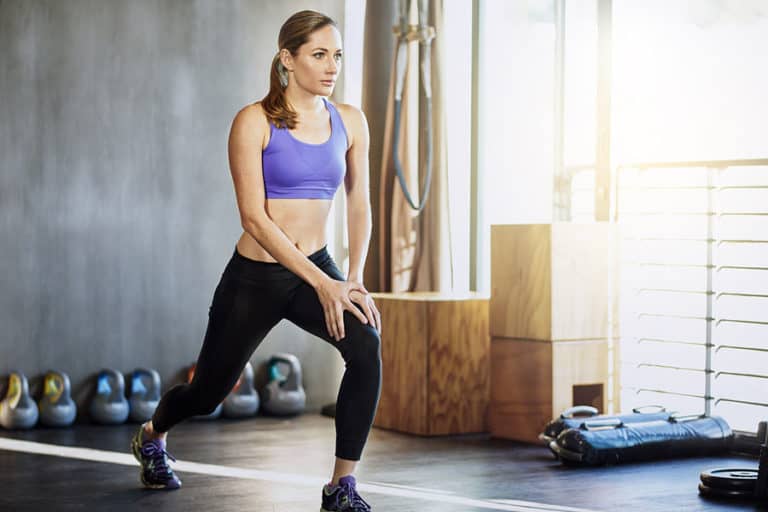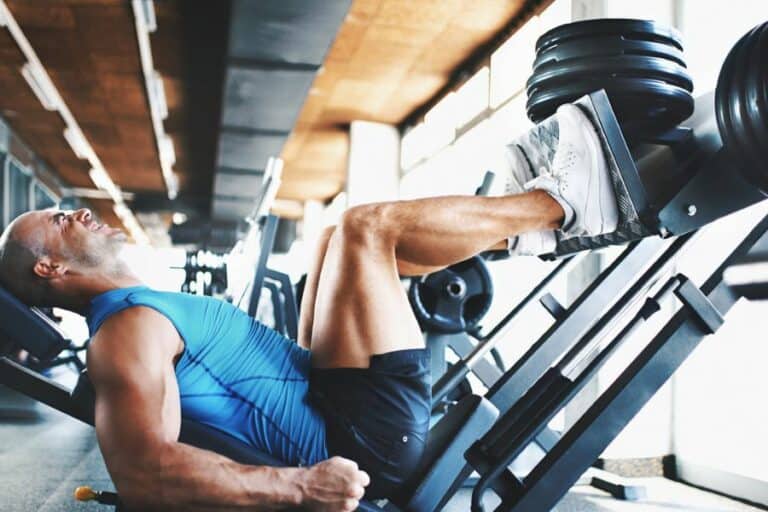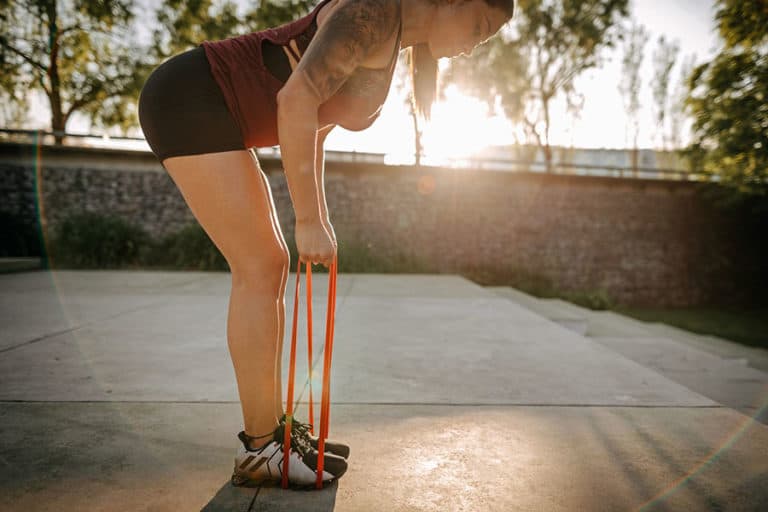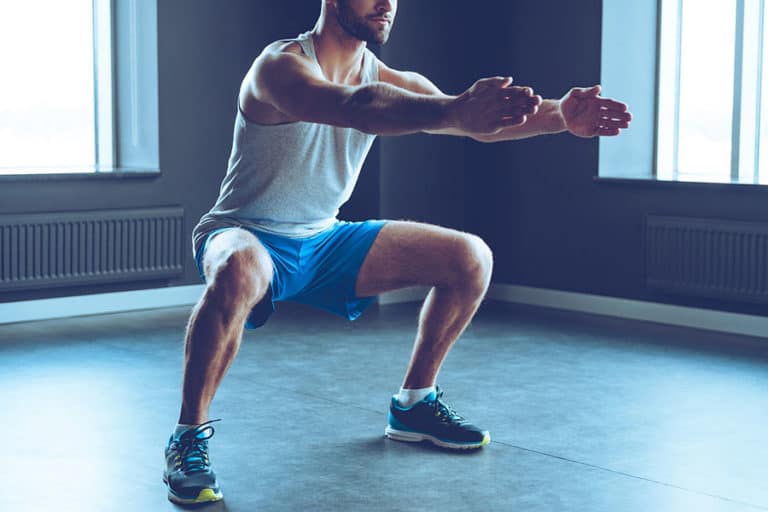Wall Squats – How To Do, Benefits And Safety Measures
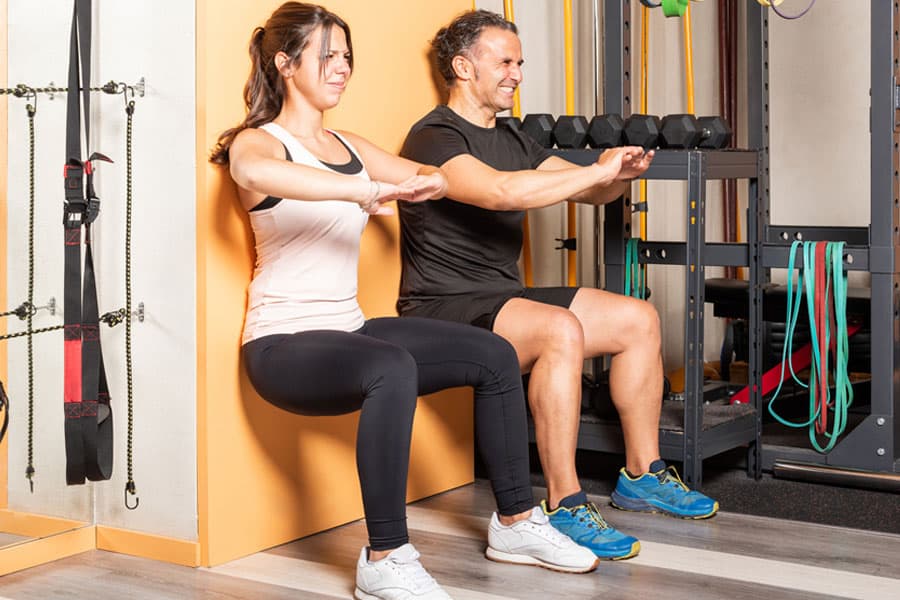
How to do | Muscles worked | who should/should not | Add to routine | Safety tips | Benefits | Variations
Wall squats-an exercise known for its functionality, is one of the best variations of the squats.
Also known as the “wall sit exercise” or “the devil’s chair,” it can be performed with one of the most readily available equipment – a flat wall. All it requires you to do is press your back against the wall and perform a squat.
How to do wall squats?
It is essential to perform a squat with proper form and technique. Here is how to do wall squats in the correct way:
- Start by standing upright, with your back against a sturdy wall.
- Keep your feet shoulder-width apart while leaning on the wall and take two steps forward (2 feet from the wall).
- Slowly slide your hip down until your thighs are parallel to the floor.
- Your knees should be in line with your ankles.
- Press your upper back against the wall as you tighten your core muscles and tuck your pelvis slightly inwards.
- You may place your hands on your hips or in a neutral position.
- Hold the wall squat pose for a few seconds (ideally 20-60 seconds).
- Slide your back upwards as you move back into the starting position.
Note: Place your hands on the wall if you require added support.
Muscles Worked
The standard wall sit’s static position helps strengthen and build muscle. Given below are the muscles worked:
Primary muscles worked
| Quadriceps muscles | rectus femoris, vastus lateralis, vastus medialis, vastus intermedius |
| Glutes | gluteus maximus, gluteus medius, gluteus minimus |
| Core muscles | transversus abdominis, rectus abdominis, external oblique muscles, internal oblique muscles |
Secondary muscles activated
| Hip Abductors | gluteus medius, gluteus minimus, and tensor fasciae latae |
| Hip Adductors | pectineus, adductor longus, gracilis, adductor brevis, and adductor magnus |
| Hamstrings | semitendinosus, semimembranosus, and biceps femoris muscles |
| Calves | gastrocnemius and the soleus |
Who should and should not do wall squats
Individuals can perform the wall squat at all fitness stages. However, here are some specific categories of people that must or mustn’t incorporate it into their routine:
Who should do:
- It is a great exercise for skiers, boarders, cyclists, and hikers as it emulates the same position and muscles worked while practicing the respective sports.
- It helps build endurance to remain in the position for an extended period, eventually leading to less quad fatigue [1]National Academy of Sports Medicine: WALL SITS: HELPFUL TIPS AND BENEFITS.
- Anyone looking to build lower body isometric [2]PubMed: The effects of isometric wall squat exercise on heart rate and blood pressure in a normotensive population strength, functional performance, and endurance must include this exercise in their workout.
Who should not:
- If you have any previous injuries or health conditions, incorporate wall squats only after consulting the doctor or your physical therapist.
- Wall sits are especially tough on the knees [3]PubMed: Patellofemoral joint force and stress during the wall squat and one-leg squat. Stop immediately if you have weak knees and experience shooting pain in your knees or kneecaps.
Adding it to your routine
Wall squats can be easily incorporated into your lower-body workout routine as they can be performed anywhere. Here is how to fit this isometric exercise into your circuit.
| Beginner level | Reps |
| Warm-up (spot jogging/cycling) | 8-10 mins |
| Mountain climber | 15-20 reps |
| Donkey kicks | 15-20 reps |
| Wall squats | 8-12 reps |
| Sumo squats | 8-12 reps |
Note: As an absolute beginner, you may do 2-3 sets of 5 reps of 20 seconds of the stand-alone exercise.
The circuit mentioned below is a sample to incorporate the wall squats for individuals at an intermediate/advanced level.
| Intermediate/advanced level | Reps |
| Warm-up-Jumping jacks, toe touches, cycling | Approximately for 10 mins |
| Walking lunges | 20-25 reps |
| Wall squats (with weights) | 10-12 reps |
| Pistol squats | 10-12 reps |
| Leg press | 10-12 reps |
Note: As a stand-alone exercise, people at an intermediate/advanced level may perform 2-3 sets of 8-10 reps of 30-60 seconds. The weights can be added or reduced as per individual strength.
Safety Measures to follow
It is best to perform any exercise keeping safety measures in mind. Performing a wall squat may seem like an exercise that can not go wrong. However, keeping the safety tips in mind is best to gain all its benefits.
Here are some noteworthy safety tips:
Warm up before and cool down after
Ensure to warm up [4]Mayo Clinic: Aerobic exercise: How to warm up and cool down before, and cool down after your routine. Warm-ups are integral for giving you a kick start and getting your blood pumping. It may also reduce the risk of injury.
Cooldowns allow your body to regulate the heart rate and blood flow after an intense workout.
Abide by its proper form and technique
While performing wall squats, your knees hold most of your body weight. Do not allow your knees to extend beyond your toes, as you may lose balance and put unnecessary strain on your knees.
Moreover, by doing this, you will end up working your claves instead of quads.
Rest
It is essential for you to rest before and after you train the same muscle groups. This allows your muscles to recover sufficiently.
Ideally, a 24-48 hour gap between workouts is enough.
Do not push yourself
Do not try to beat your threshold in the initial stage of your workout journey. Increase the sets and hold-time as you advance.
Slide back up at the end
One of the common mistakes is to slide down at the end of the move. This may cause strain on your knees.
After you complete the squat, do not slide downwards. Instead, you must push back up to the standing position for the next rep.
Benefits of doing wall squats
The benefits of wall squats are not only limited to the muscles it targets. Here are some unique advantages of performing wall squats:
1. Core stabilizer
The core is engaged throughout the move. The tightening of the abdominal muscles strengthens the core muscles.
Regularly performing the exercise strengthens and stabilizes the core.
2. Calorie burner
The stance in the wall squat contracts the lower body muscle groups not only isometrically but also in a compound manner.
The repetition of these long-held contractions revs up your cardiovascular system and increases the heart rate resulting in a good amount of calories burned and thus helping you shed weight.
3. Improves flexibility and balance
Performing wall squats regularly makes your knees and ankles habitual of enduring the body weight.
This improves balance and flexibility and makes it easier to progress to other exercises and advanced squats.
4. Builds stamina and endurance
Incorporating this functional exercise into your daily fitness routine strengthens your lower body and abdominal muscles.
The strengthening of the muscles due to the constant repetitions of this static exercise gradually builds tolerance to hold the stance for longer and thus builds endurance.
5. Minimal chances of injury
Wall squats are one of the least complicated and least dangerous exercises compared to many others. It is a bilateral exercise, which means it acquires balance from both the lower limbs. Moreover, it also takes the support of the wall making it one of the safest exercises to perform.
Variations to try
This exercise is easily customizable to match any fitness level. You can simplify it or make it more challenging as per your requirement. Here are some variations of wall sit exercises for you to choose from:
To simplify the wall squat:
- You may lower the intensity by bending your legs at a 45-degree angle rather than 90 degrees. This makes it easier to hold the pose longer.
You may also shorten the duration of the hold or lessen the number of repetitions as per your capacity. - Place an exercise ball against the wall and lean on it. Continue to perform the exercise as per usual. Be mindful not to drive your feet forward, as you may lose balance. Performing the exercise with the stability ball not only gives beginners support but also greatly improves balance and posture.
To add a challenge to the wall squat:
- Perform the single leg wall sit. This unilateral move makes the wall squat more challenging as you need to extend one leg in front of you as you lower yourself into a wall squat. This modification of the exercise will help to enhance your balancing skills.
- Hold a pair of dumbbell’s and support them with your thighs as you move into a wall sit. The added weights build muscle strength and endurance.
- Add bicep curls or shoulder presses with dumbbell’s to your wall squat. This will work your upper body along with your lower body simultaneously.
Conclusion
The wall squat is a great exercise that works your entire lower body. It is perfect for beginners but versatile enough to be made more challenging as you progress. Remember to follow the safety guidelines carefully while performing the exercise. Including wall squats in your fitness regime will help improve your stamina, flexibility, and focus.
References
| ↑1 | National Academy of Sports Medicine: WALL SITS: HELPFUL TIPS AND BENEFITS |
|---|---|
| ↑2 | PubMed: The effects of isometric wall squat exercise on heart rate and blood pressure in a normotensive population |
| ↑3 | PubMed: Patellofemoral joint force and stress during the wall squat and one-leg squat |
| ↑4 | Mayo Clinic: Aerobic exercise: How to warm up and cool down |


